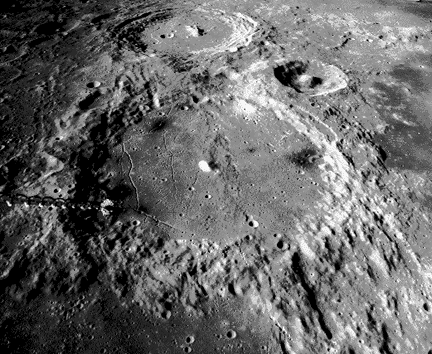Alphonsus (lunar crater)

Alphonsus is a crater on the Moon, 118 kilometers (73 miles) in diameter, on the eastern edge of Mare Nubium, which has frequently been associated with transient lunar phenomena (TLP). In 1958 and 1959, various observers reported seeing reddish clouds in its vicinity, and on 3 November 1958, the Soviet astronomer N. A. Kozyrev working with the 50-inch reflector at the Crimean Astrophysical Observatory claimed to have obtained a spectrum of the event which suggested a gaseous emission. Assuming the phenomenon is real, the likeliest explanation is that gases occasionally escape to the surface through fractures in the crust.
The accompanying photo was taken from Apollo 16. Five dark patches are visible along the crater floor edge, each with a central pit. Three of the patches lie along clear fracture trends. Also, most of these pits are also elongated or irregular in shape, making it unlikely that they are impact craters. Instead, they probably mark the sites of small volcanic eruptions, possibly associated with the TLPs that have been witnessed in Alphonsus.
The unmanned American spacecraft Ranger 9 crashed into Alphonsus in 1965.


